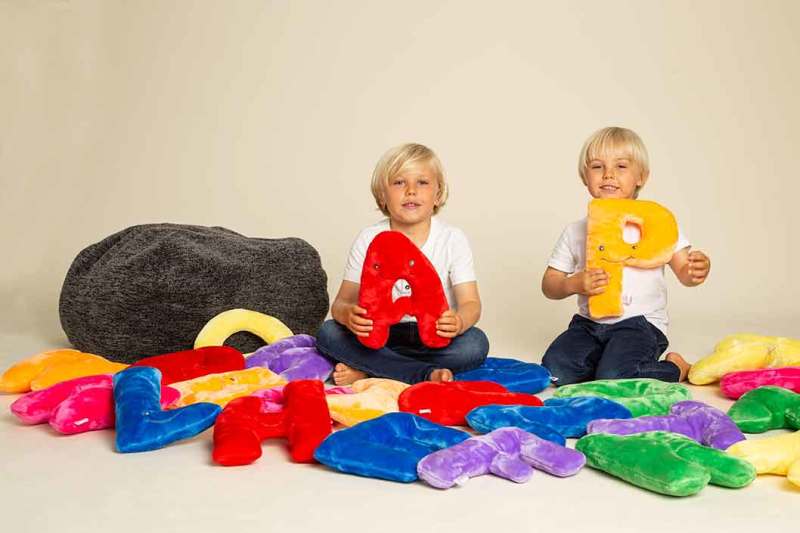
Building Strong Communication Skills: Effective Strategies for Preschoolers
July 27, 2023
Learning to communicate effectively is critical for children to interact with others and the world in which they live. Communication is used to indicate needs and have them met. As such, developing this skill is one of the most important tasks for young children.
Teaching language and communication skills early is crucial, however, toddlers and preschoolers have unique needs. They retain information better when it is delivered in a playful, fun way that helps them make sense of their environment. Including imaginative play like role-playing games and charades is an excellent way to spark their creativity and keep things fresh. Other simple communication games like show-and-tell and question games are wonderful ways for kids to learn how to express themselves.
Why Are Communication Skills for Kids Important?
Toddlers and preschoolers must learn communication skills to express their thoughts, feelings, and needs. Communication gives them the tools they need to interact with others in a meaningful way through daily interactions and social events. Understanding and developing communication skills begin immediately and continue to progress throughout life. There are two main types of communication:
Verbal communication uses tone, inflection, word choice, language, and dialect to impart information to others. Verbal communication is the first step to effective written communication which is important for academic success.
Nonverbal communication includes things like physical touch, hand gestures, facial expressions, eye contact, and personal space. This is the first type of communication learned, as young children begin to use head, body, and eye movements in conjunction with vocalizations to convey their needs.
Both these skills help to improve a child's ability to express themselves and build healthy relationships with others. Problems with communication may lead to a child developing behavioral disorders, low self-esteem, or cause them to withdraw from interacting with their peers.
How to Teach Communication Skills
Incorporate communication activities into everyday life to help your child learn the necessary skills they need to thrive in the world. Some of the best practices for effective teaching include:
Encourage communication by acknowledging their interests, commenting, and responding.
Constantly talking to them during everyday activities.
Encouraging them to communicate their feelings, wants, and needs.
Reinforce basic skills like eye contact to show interest in what the other person is saying. Slow down when speaking to your child to model correct pronunciation and encourage them to speak clearly.
Practice communication etiquette such as taking turns to speak instead of interrupting someone. Demonstrate the correct way to hold a polite conversation to give your child an example to emulate.
Communication Games and Activities
Working on improving your child's communication skills is an opportunity to engage in some enjoyable games and other activities. Adding an element of fun to your teaching methods keeps children involved and allows them to look forward to participating in the day's lessons.
There are countless ways to help your child communicate more effectively, from playing telephone to acting out charades. Take some time to explore a variety of activities to discover which ones your child likes the best and change them up often to keep them eager for more.
Telephone
This classic game can not only help with communication skills but can also assist in a toddler's listening skills. It's a popular choice for a variety of ages as you can adapt the game to suit both younger and older kids.
Have the children sit in a circle and choose someone to begin the game by whispering a message into the ear of the child seating next to them. The children continue to repeat the message to their neighbor until the last player states the message out loud. Many times the message changes from the first to the last player. Playing telephone improves a child's listening skills, attention span, verbal expression, and builds vocabulary.
Show and Tell
Show and tell can act as a great way for toddlers and preschoolers to practice their verbal communication skills in front of an audience. This is especially true when they are presenting something they like such as a favorite toy or topic.
An activity like show and tell helps children to develop not only their vocabulary skills but teaches them confidence and how to speak vividly and persuasively. They can even use Alphapals individual letters to help them communicate what they are saying.
They can also make use of our letter keychains designed to be attached to their backpacks. James can opt for a j keychain, while Kennedy can choose a k keychain. This way, they can consistently practice communication, perhaps even using them when introducing themselves.
Role-playing
Role-playing allows kids to let their creativity and imagination run wild. Parents can role-play with their kids by being a nurse, a cop, a grocery store clerk, and more. This is an outstanding way for children to explore a broader range of word choices, intonation, and even accents to bring their characters and story to life.
10 Questions
This is the perfect game to allow your child to formulate and ask direct questions. Have the kids stand in a circle with one player in the center of the group. This child has to think of a famous person or place.
The children forming the circle ask 10 questions to figure out what it is, receiving only a yes or no answer. This game helps with word choice, critical thinking, and problem-solving.
Charades
A long-time favorite, charades is an activity similar to role-playing that toddlers can use as a chance to let loose, have fun, and work on their communication skills. Charades require problem-solving skills to effectively communicate non-verbally. Children learn to use and understand facial expressions, body postures, and hand signals to communicate information.
A fun way to incorporate Alphapals would be to have the child begin their charades with the first letter of the person, place or thing they are trying to convey. For example, they can use a plush letter S to denote swimming.
Fostering Conversation Skills with Alphapals
Teaching communication skills to your child is essential to give them the tools they need to interact with others in a meaningful way. Using entertaining teaching methods like interactive games and activities that spark the imagination are great ways to keep your child excited about learning.
Many children benefit from having hands-on objects they can touch, see, and move to reinforce crucial communication lessons. Alphapals are an excellent resource for children of all ages. They are soft, colorful letters that provide a sensory experience for children learning their sounds and letters. Use them to teach the basic foundations of communication, such as how letters form words and word combinations communicate information.
As children grow and develop, use Alphapals to practice more advanced skills like spelling. Browse the selection of Alphapals products to purchase individual letters or full sets to support your child's imagination and education.









